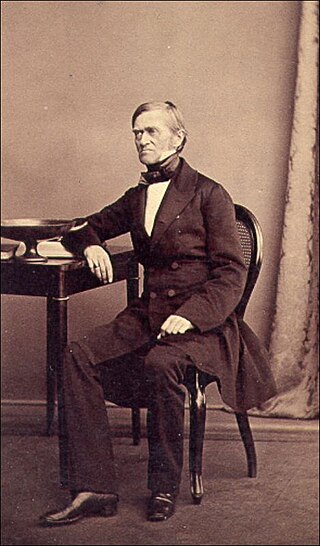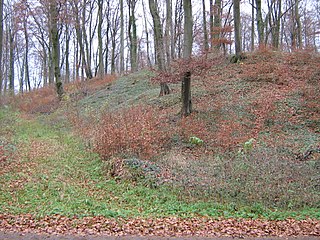Related Research Articles

Friedrich Wilhelm Eduard Gerhard was a German archaeologist. He was co-founder and secretary of the first international archaeological society.

Leonhard Ragaz (1868–1945) was a Swiss Reformed theologian and, with Hermann Kutter, one of the founders of religious socialism in Switzerland. He was influenced by Christoph Blumhardt. He was married to the feminist and peace activist Clara Ragaz-Nadig.
Heinz Kähler was an ancient art historian and archaeologist.
Clementina Panella is an Italian archaeologist, a professor at the University of Rome La Sapienza, where she teaches Methodology of Archaeology. She has guided and co-written a number of articles on the commercial pottery of ancient Italy.
Robert Weimar was a German professor of law and psychologist.

Celtic Luxembourg existed during the period from roughly 600 BC until 100 AD, when the Celts inhabited what is now the territory of the Grand Duchy of Luxembourg. Their culture was well developed, especially from the 1st century BC, as can be seen from the remains of the extensive Titelberg site in the far southwest of the country and from the impressive finds in several tombs and necropolises in the Moselle valley and its surroundings.
Birgitta Hoffmann is an archaeologist and adult education teacher. Her research covers the Roman military, especially the Roman frontiers and ancient glass and beads of the first millennium AD.

Lindenhof is the present name of the large fortified settlement, or oppidum, likely founded by the Helvetii on the Lindenhof hill on the western shore of the Limmat in Zürich, Switzerland.

The Upper Germanic-Rhaetian Limes, or ORL, is a 550-kilometre-long section of the former external frontier of the Roman Empire between the rivers Rhine and Danube. It runs from Rheinbrohl to Eining on the Danube. The Upper Germanic-Rhaetian Limes is an archaeological site and, since 2005, a UNESCO World Heritage Site. Together with the Lower Germanic Limes it forms part of the Limes Germanicus.
Hans Beck is a German and Canadian scholar in the field of Classical Studies.
The following is a timeline of the history of the municipality of Bern, Switzerland.
Sabine Renate Huebner/Hübner is Professor of Ancient History at the University of Basel (Switzerland) and Head of Department. She is an expert on the religious and social history of antiquity, particularly of Graeco-Roman Egypt.
Naïdé Ferchiou was a Tunisian archaeologist whose work dealt mainly with Roman North Africa. She excavated at several important sites, including Abthugni.
Henriette Harich-Schwarzbauer is a Professor and Head of the Department of Latin Philology at the University of Basel, Switzerland.
Stefanie Jacomet is professor of archaeobotany at Basel University. Her research focuses on investigating wetland sites in Central Europe and developing archaeobotanical methodologies.

Lilly Louise Kahil was a Swiss-French archaeologist and classicist of Egyptian-German descent. She was the founder of the Lexicon Iconographicum Mythologiae Classicae, an encyclopedia of ancient Greek, Etruscan and Roman mythology.
Ellen Judith Beer was a Swiss art historian. She focused on Medieval art.
Maria Radnoti-Alföldi was a Hungarian-German archaeologist and numismatist specialising in the Roman period. She is known for her research into the analysis of the distribution of coin finds, Roman history, and the self-depiction of the Roman emperors.
Yule Forenorth Kilcher was a Swiss-born American homesteader who was a member of the Alaska state senate from 1963 to 1966.
Jadwiga Lipińska née Freyer was a Polish Egyptologist.
References
- ↑ "Prof. em. Dr. Stefanie Martin-Kilcher" (in German). Universität Bern. Retrieved 21 May 2021.
- ↑ Barbara Oldenstein-Pferdehirt (1981). "Stefanie Martin-Kilcher: Das römische Gräberfeld von Courroux im Berner Jura. Mit einem anthropologischen und osteologischen Beitrag von Bruno Kaufmann. Basler Beiträge zur Ur- und Frühgeschichte Band 2. Derendingen 1976". Fundberichte aus Baden-Württemberg (in German): 721–722.
- 1 2 3 Christa Ebnöther; Regula Schatzmann (2010). "Vorwort". Oleum Non Perdidit: Festschrift für Stefanie Martin-Kilcher zu ihrem 65. Geburtstag (PDF). Antiqua (in German). Vol. 47. pp. 7–8.